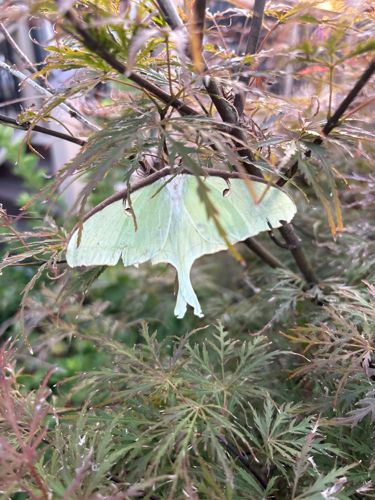Luna Moth
Scientific Name: Actias luna
Order & Family: Order: Lepidoptera, Family: Saturniidae
Size: Wingspan typically ranges from 7.5 to 11.5 cm (3 to 4.5 inches).

Natural Habitat
Found in deciduous hardwood forests across North America, from eastern Canada down to Florida and west to the Great Plains. They prefer woodlands and forested areas where their host trees for larval feeding are abundant.
Diet & Feeding
Adult Luna Moths do not have mouths or digestive systems, so they do not feed. They live off energy reserves stored from their caterpillar stage. Luna moth caterpillars are herbivorous, feeding on the leaves of various trees, including hickory, sweetgum, persimmon, sumac, and birch.
Behavior Patterns
Adult Luna Moths are nocturnal and are active at night. They emerge in late spring or early summer, typically after dusk, and are attracted to light. Their primary goal as adults is to mate and lay eggs within their short lifespan (about one week). The caterpillars are solitary feeders.
Risks & Benefits
Luna Moths pose no risks to humans or agriculture. On the contrary, they are considered beneficial insects as their caterpillars convert plant material into nutrients that enrich the soil, and they are a food source for birds and other predators. They are also important indicators of healthy forest ecosystems.
Identified on: 8/18/2025